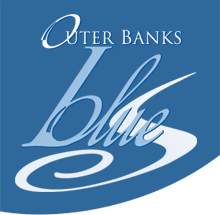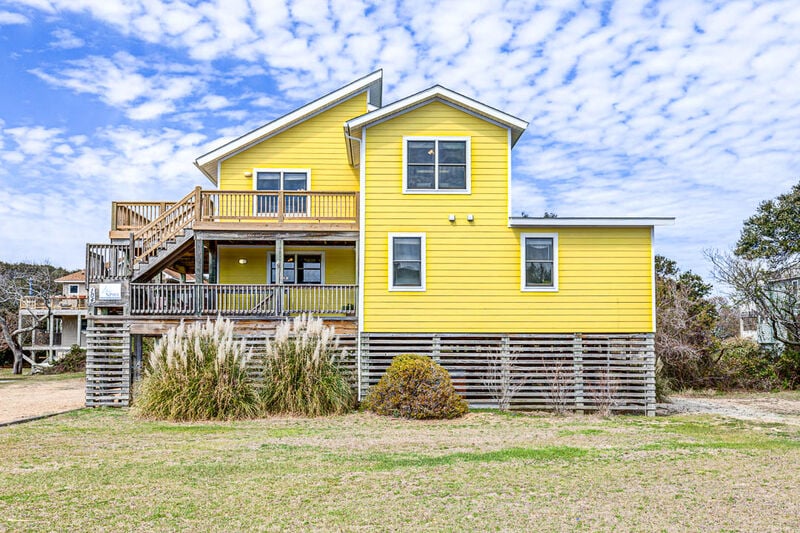This week on "Everything Outer Banks" on Memory Monday, I am remembering the growth of this area and I am struck by the term "Outer Banks." As a 46 year resident of the area I remember the day when I would tell people that I was from "Nags Head" because I didn't have to explain where Kitty Hawk was (heaven help you if you told someone you were from Kill Devil Hills). The name Nags Head was known to most people I came in contact with as I grew up in the late 60's and 70's. Then there was a time when Kitty Hawk started gaining some traction among folks in Virginia and Maryland as a "known" destination, but starting about 10 years ago the term Outer Banks really started to take hold as the name for this place that we all love.Even today there are still some people that will reference "Nags Head" or "Duck" when talking about the area, but overwhelmingly "The Outer Banks" has become the brand of the area. To a large part we owe the marketing efforts of the local visitors bureau to that credit. As a former member of the local tourism board I remember the time when we actually changed the name of the organization from the Dare County Tourism Bureau to the Outer Banks Visitors Bureau just 8 years ago. The change really provided an outward sign that all of the communities represented by the local tourism authorityIn this age of the Internet one of the key indicators of popularity is how much you have to pay to come up on a paid search on Google. In other words what does it cost to Google it?!You are probably well aware that Google, MSN, Yahoo and others will sell keywords and phrases to anyone who has relevant content on their web site and who is willing to pay for it.A quick look this morning shows that if you wanted to purchase the #1 spot for the following words this is what you would have to pay for some keywords on Google:"Duck" will cost you .78 for the top spot, and you can expect to get up to 1,000 clicks a day. However, be warned most people are actually looking for a bird when they type the word in."Hatteras" costs $1.83, but you should only expect about 150 people a day look up this word."Kill Devil Hills" goes for $2.17 and Google says to expect less than 75 folks to look it up."Nags Head" will cost $2.43 for the #1 spot and you can expect 203 people on average every day to type that term into a search"Kitty Hawk" runs $2.83 to be guaranteed top placement and 94 people will search for it today.And the winner is Outer Banks...get ready to shell out $2.92 for the top spot on a search for that term and you should be prepared for 350 people every day to click the Outer Banks.So it is settled. Google has spoken, and so "Outer Banks" is the most popular way to reference this spot. Thus you also know now why my company isn't known as Kitty Hawk Blue, or Nags Head Blue, or even Duck Blue. Outer Banks is where it's at!Catherine Kozak is a terrific writer that works with the Virginian Pilot Newpaper of Norfolk, Virginia and she writes about a number of issues related to the Outer Banks. She had an article in today's paper that she has graciously let us reprint here for your enjoyment. Take a look at the original article at:http://hamptonroads.com/2009/04/whats-name-outer-banks-north-carolinaHere is Catherine's article regarding the Outer Banks:The Outer Banks of North Carolina was not the Outer Banks until, well, nobody is really sure when.It's safe to say that today the name Outer Banks is widely known, if not for its history and great beaches, then - thanks to The Weather Channel - for its hurricanes.But until recent years, the strand of barrier islands stretching south from the Virginia line to Ocracoke Island was best known as "Nags Head."Even the sign directing travelers on U.S. 64 in Chesapeake to the Outer Banks said Nags Head until a few months ago."Up here, everything from Oregon Inlet north was Nags Head, Hatteras and Ocracoke was the Banks," said Allen Burrus, a 56-year-old native of Hatteras village. "Manteo was Roanoke Island. And of course south of us was Down East."And with the fame of the Wright brothers, the Outer Banks means Kitty Hawk to many.No early maps, and even few now, identify the Outer Banks as the Outer Banks.To add to the confusion, the Outer Banks is described as anywhere from 90 miles to 175 miles long, includes or excludes the Shackleford Banks and the Core Banks, and is used as both singular and plural, sometimes in the same paragraph."In the colonial records, beaches in general were called the sand banks," said Sarah Downing, the assistant curator at the Outer Banks History Center. "They were also referred to as sea banks. I kept looking in history books, and they were never called the Outer Banks."Downing said that old Outer Banks advertisements invited visitors to "Come to Nags Head " or the "Dare beaches " or the "Sir Walter Raleigh coast land."In a collection at the University of North Carolina at Chapel Hill's Wilson Library, the earliest mention of the Outer Banks, written lowercase, in The New York Times archives was on Dec. 26, 1932, according to Nicholas Graham, the state's maps project manager.The term showed up in a May 28, 1939, headline: "Seashore Park Taking Form. The Outer Banks of North Carolina, Including Cape Hatteras, Being Developed by Government as Vast Playground."To the Dare County Tourism Board, the fact that the Virginia Department of Transportation changed its highway signs to the Outer Banks is a success story."That's how powerful the brand is," Outer Banks Visitors Bureau managing director Carolyn McCormick said at a recent board meeting.Not to mention its ubiquitous modern offspring, OBX.
Posted by Outer Banks Blue
The Growth of the Phrase
Search
Categories
- Outer Banks Adventure Guide (25)
- Outer Banks Eats (13)
- Outer Banks News (58)
- Outer Banks Travel Guide (48)
- Outer Banks Vacation Tips (106)
Featured Properties
NH085-Cool Breeze
Nags Head -
620 ft. to the beach
6 bedrooms
5 baths
NH080-Wink Beach
Nags Head -
Oceanfront
8 bedrooms
7 baths
NH087-Dawn to Dusk
Nags Head -
1030 ft. to the beach
5 bedrooms
3 baths
KDH060-Boardwalk
Kill Devil Hills -
Oceanfront
12 bedrooms
10 baths
NP001-The Spice Rack
Duck -
1230 ft. to the beach
5 bedrooms
5 baths
SS040-Beach Rabbit
Southern Shores -
1100 ft. to the beach
4 bedrooms
3 baths
NH088-Cloud Nine
Nags Head -
975 ft. to the beach
8 bedrooms
8 baths









